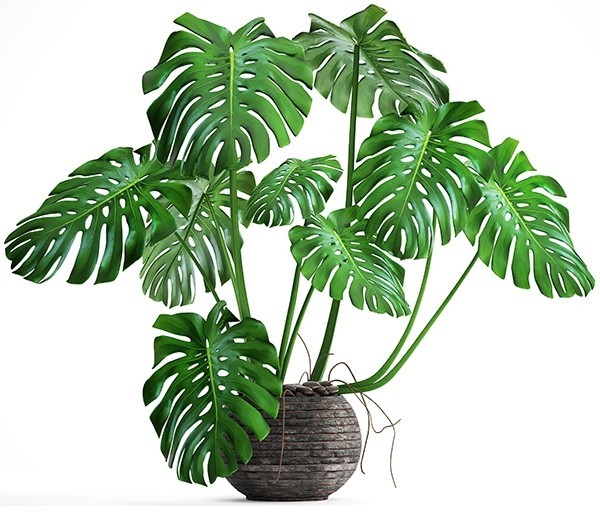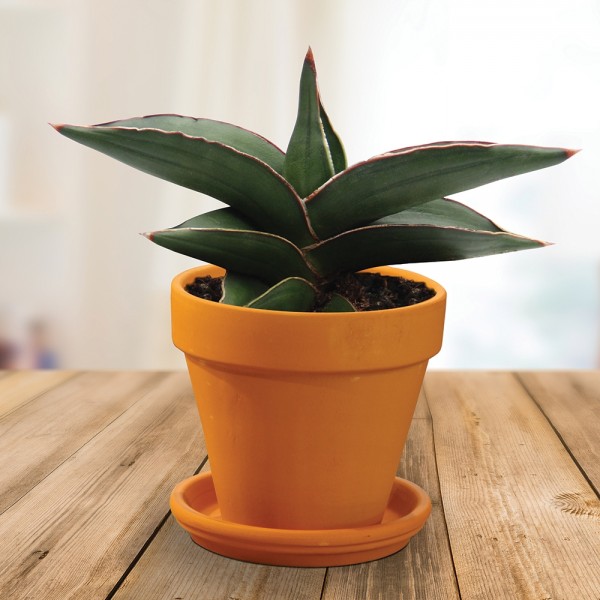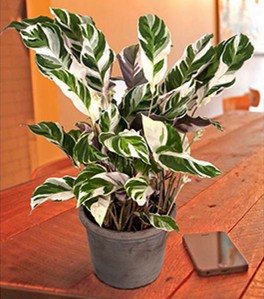Four Fantastic Indoor Foliage Plants
by Laurelynn Martin and Byron Martin
While we wait for the warmth of late spring and summer, most of us in the north are still gardening inside. And, many of us will continue to garden inside despite the weather because of space issues, or just the sheer joy we get from growing plants inside our home.
There are several things to keep in mind when gardening inside. First, you must evaluate your growing space. Will you be growing in full sun, partial sun or a combination of both? Are you interested in flowers, fragrance or simply big green leafy plants to give the feeling of a connection to nature that otherwise requires gardening outdoors?
A woman wrote to me today and said her indoor garden is what brings her joy every day because she feels closer to the natural world and she gets great satisfaction from cultivating plant life. If you want indoor foliage plants, here are some of our favorites:
Fiddle Leaf Fig (Ficus lyrata) is one of the trendiest houseplants of the year and we can see why. Its fiddle-shaped foliage with green, glossy leaves adds drama and interest to any indoor space and it has been heralded by the New York Times as the “it” tree of the design world. It thrives in bright light with infrequent watering. On a mature plant the leaves can reach up to 1.5’ long.
Mexican Breadfruit (Monstera deliciosa) is known for its large shiny leaves that once they grow over 12” in length, start to have vertical slices and curious holes that resemble Swiss cheese. The leaves can reach up to 3’ long and have a way of creating a living screen with aerial roots that anchor to a trellis, moss pole or wall. Monstera is an understory plant and can be seen growing in the jungle, climbing on trees. It produces edible fruit that ripens to have a sweet pineapple-tasting flesh. We can see why it received the Royal Horticultural Society’s Award of Merit. Remember to grow in partial sun, mimicking its natural habitat and let the plant dry out and then thoroughly water, similar to a jungle rainstorm.
If you are looking for something a little smaller and more suitable for a windowsill we recommend, Sansevieria ‘Samurai Dwarf’ (Sansevieria ehrenbergii). Its short stature only reaches 4-6” tall. It also can withstand periods of dryness and does well in a home environment. Although, it grows best in full sun, it can take periods of partial light. The v-shaped leaves have a slight red tint on the leaf edges and leaf tips and arise in alternating patterns. When viewed from the top, it creates a pleasing, circular form. The best part about ‘Samurai Dwarf’ is that it’s an easy-care plant and only needs water when the soil is dry. In fact, it’s important to dry the soil between waterings so the roots thrive. This rare African plant has become a mainstay in my indestructible collection of plants.
Another favorite of ours is White Fusion Peacock Plant (Calathea hybrid). The distinctive leaves of ‘White Fusion’ makes a beautiful accent plant in any home, and what we love most is that it doesn’t need a full sun location but will grow beautifully in bright, indirect light areas.
The alternate streaks of light and dark green and the purple undersides add color and make it a designer’s dream plant for adding dimension to any room. When choosing an air cleaning plant, this one landed on the top of our list for the most desirable and colorful foliage plant. Grow in partial sun and keep evenly moist.
Thank you for visiting Logee’s. Before you go, please be sure to explore our selection of fruiting, rare and tropical plants. And don’t forget to request your free Logee’s catalog, too!
For more information on the indoor foliage plants mentioned in this article, please see the links below:







